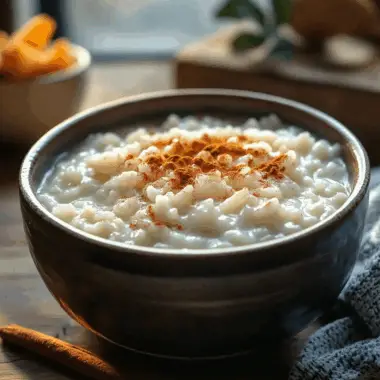The golden puff of a fresh sopapilla is a sight and taste to behold. Originating from Latin American cuisine, these light and airy fried pastries are a favorite in Mexican households and street food culture. While traditionally served with a honey drizzle, you’ll also find them dusted with cinnamon sugar or paired with warm chocolate sauce. Making sopapillas at home is surprisingly simple and incredibly satisfying. The dough comes together quickly, fries up in just seconds, and puffs into golden pillows that are crisp on the outside and tender inside. Whether you’re hosting a fiesta or just craving something sweet, these treats are a warm, nostalgic addition to any table.
Full Recipe:
Ingredients:
-
2 cups all-purpose flour
-
1 teaspoon baking powder
-
1/4 teaspoon salt
-
2 tablespoons shortening
-
3/4 cup water
-
Oil for frying
-
Honey for drizzling
Directions:
-
In a large bowl, mix the flour, baking powder, and salt.
-
Cut in the shortening until the mixture becomes crumbly.
-
Gradually stir in the water to form a soft dough.
-
Knead the dough for a few minutes on a lightly floured surface until smooth.
-
Let the dough rest for 15–20 minutes, then roll out to 1/8 inch thickness.
-
Cut the dough into 3-inch squares or triangles.
-
Heat oil in a deep fryer or large skillet to 375°F (190°C).
-
Fry the dough pieces in batches until golden and puffed, about 30 seconds per side.
-
Remove and drain on paper towels.
-
Drizzle with honey and serve warm.
Prep Time: 15 minutes | Cooking Time: 15 minutes | Total Time: 30 minutes
Kcal: 160 kcal | Servings: 8 servings
Exploring the Delicious Tradition of Sopapillas: A Classic Mexican Dessert
Sopapillas are a beloved treat that transcends time and geography, offering a warm, puffy, and sweet indulgence that delights people of all ages. A staple in Mexican and Southwestern cuisine, these fried pastries have become a cherished comfort food, especially when served with a drizzle of golden honey or a dusting of cinnamon sugar. Their simplicity in ingredients contrasts beautifully with their rich, airy texture and melt-in-your-mouth flavor.
Whether you’re hosting a family gathering, preparing for a fiesta, or simply craving a sweet snack, sopapillas are the perfect addition to any menu. They are easy to make, versatile in flavor, and impossible to resist. In this article, we’ll delve into the background of this delicious dessert, explore its cultural roots, discuss tips for making the perfect batch, and suggest ways to customize it for different tastes.
A Cultural Icon: The Origins of Sopapillas
Sopapillas, sometimes spelled “sopaipillas,” are thought to have originated in New Mexico over 200 years ago, influenced by Spanish settlers who brought with them deep-fried pastries from Spain and North Africa. The dish evolved in the Americas into something uniquely Southwestern and Mexican. Today, variations of sopapillas are enjoyed throughout Latin America, particularly in regions like Chile and Argentina, but the Mexican-style sopapilla is arguably the most recognized version in the United States and beyond.
The name “sopapilla” is derived from the Spanish word “sopaipa,” which originally referred to a type of sweetened dough fried in oil. While traditional versions vary from place to place, the essential idea remains the same: a fried dough that puffs up into a hollow pocket, offering a light and airy texture that pairs wonderfully with sweet or savory toppings.
Texture and Taste: What Makes Sopapillas Irresistible?
The charm of sopapillas lies in their unique texture. When the dough hits the hot oil, steam causes it to puff up quickly, creating a crisp outer shell and a soft, hollow center. This perfect puff makes them ideal for drizzling with honey or stuffing with sweet fillings.
The taste is subtly rich just enough to satisfy a craving without being overly decadent. The neutral flavor of the dough means it’s a perfect canvas for all kinds of toppings and variations. Most commonly, they are enjoyed warm with a simple honey drizzle, which seeps into the crevices and creates a delightful contrast between crispy and sticky-sweet.
For those with a bigger sweet tooth, sopapillas can be dusted with powdered sugar, coated with cinnamon sugar, or served with chocolate or caramel sauce for dipping. Savory variations are also popular, especially in New Mexican cuisine, where sopapillas might be filled with ground beef, beans, cheese, and green chile.
Why Sopapillas Are a Must-Have on Your Dessert Table
Sopapillas are more than just a dessert they are an experience. From the moment the dough is rolled and cut into squares or triangles to the sizzling sound of frying and the visual thrill of watching them puff up in seconds, making sopapillas is an engaging and joyful process. They are perfect for introducing kids or novice cooks to baking, as they involve few ingredients and produce a rewarding result quickly.
They also offer a festive flair to any meal. Their golden appearance and sweet aroma make them a fitting end to everything from Taco Tuesday dinners to elaborate Cinco de Mayo celebrations. Sopapillas can be made in large batches and served buffet-style with a variety of toppings so guests can customize their own something that adds fun and creativity to any gathering.
Moreover, they are easily adaptable to different dietary preferences. With just a few tweaks, they can be made vegan or gluten-free, opening the door for a broader audience to enjoy this traditional treat.
Tips and Tricks for Making Perfect Sopapillas
Achieving the ideal sopapilla requires attention to a few important details. First and foremost, the dough must be just right soft, pliable, and well-rested before rolling. Allowing the dough to rest helps the gluten relax, resulting in a more tender pastry.
The frying oil should be at the correct temperature (around 375°F or 190°C) to ensure proper puffing and prevent the dough from becoming greasy or heavy. If the oil is too cool, the sopapillas won’t puff; if it’s too hot, they’ll brown too quickly on the outside while staying doughy inside.
Cutting the dough into uniform shapes ensures even frying, and flipping them once during the process gives a beautiful golden brown on both sides. Once they are removed from the oil, they should be drained on paper towels to absorb excess oil before being drizzled with honey or sprinkled with toppings.
Serving Ideas and Flavor Variations
The classic way to serve sopapillas is warm with honey, but the options for serving them are practically endless. Here are a few delicious ideas:
-
Cinnamon Sugar Sopapillas: Toss the hot sopapillas in a mix of cinnamon and sugar for an extra-sweet twist.
-
Chocolate-Dipped Sopapillas: Dip one corner into melted chocolate or serve with a small bowl of chocolate sauce for dipping.
-
Cream-Filled Sopapillas: Let them cool slightly and fill the hollow centers with whipped cream, dulce de leche, or even fruit preserves.
-
Savory Sopapillas: Omit the sweet toppings and stuff them with seasoned meat, cheese, beans, and veggies for a filling snack or meal.
-
Mini Sopapillas: Cut the dough into smaller pieces for bite-sized treats perfect for parties or dessert platters.
Pair them with coffee, spiced hot chocolate, or a scoop of vanilla ice cream for an indulgent dessert that feels both traditional and special.
Bringing Sopapillas to Your Table: A Treat Worth Sharing
One of the best parts of making sopapillas is sharing them. Whether you’re making them with family on a quiet weekend afternoon or preparing a batch for guests at your next celebration, they evoke a sense of warmth and nostalgia. Their humble ingredients and straightforward preparation make them accessible, while their puffy, golden look and delicious taste make them unforgettable.
Advertisement
They are also a great way to explore and appreciate the culinary heritage of Mexican and Latin American cuisine. In a world of elaborate desserts and fusion trends, sopapillas remain charmingly simple and that’s part of what makes them so special.
Conclusion:
Sopapillas are a testament to how a few simple ingredients can come together to create something extraordinary. They represent the magic of traditional cooking how culture, history, and flavor can converge in a dish that’s made by hand and shared with love.
Whether you enjoy them as a sweet finish to a meal or a mid-day indulgence, sopapillas bring warmth to the table and smiles to everyone who tastes them. As you explore different variations and find your favorite way to enjoy them, one thing remains clear: sopapillas are more than just dessert they’re a celebration of flavor, tradition, and joy.








